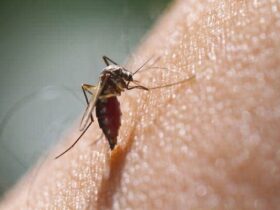Anorexia nervosa is a complex eating disorder characterized by an intense fear of gaining weight, distorted body image, and a relentless pursuit of thinness. It affects individuals both physically and psychologically, often leading to severe health consequences. Recognizing the physical symptoms of anorexia is crucial in identifying and addressing the disorder early on. In this article, 52dcab will explore the physical manifestations of anorexia and provide insights into its recognition.
In today’s society, where thinness is often equated with beauty and success, anorexia nervosa has become a prevalent eating disorder. It can affect individuals of any gender, age, or background, and its physical symptoms are indicative of the severity of the condition. Understanding these symptoms is essential in identifying anorexia and seeking appropriate help.
What is Anorexia Nervosa?
Anorexia nervosa is an eating disorder characterized by self-imposed starvation and a distorted body image. Individuals with anorexia often perceive themselves as overweight, even when they are severely underweight. This distorted perception leads to restrictive eating patterns, excessive exercise, and an obsession with weight loss.
Physical Symptoms of Anorexia
– Extreme weight loss
One of the most noticeable physical symptoms of anorexia is rapid and extreme weight loss. Individuals with anorexia often exhibit a significant reduction in body weight within a short period. Their weight loss is typically achieved through severe calorie restriction, fasting, or excessive exercise.
– Emaciation and skeletal appearance
As anorexia progresses, the individual’s body becomes emaciated, and their skeletal structure becomes more visible. The loss of muscle mass and subcutaneous fat gives them a gaunt and frail appearance. Prominent bones, such as the spine, ribs, and hip bones, may become clearly visible.
– Abnormal blood counts and electrolyte imbalances
Anorexia can disrupt the normal functioning of the body, leading to abnormal blood counts and electrolyte imbalances. Individuals may experience anemia, leukopenia (low white blood cell count), and thrombocytopenia (low platelet count). Electrolyte imbalances, such as low potassium and sodium levels, can also occur and may result in cardiac complications.
– Hair and nail problems
The nutritional deficiencies associated with anorexia can affect the health of the hair and nails. Hair may become dry, brittle, and thin, and excessive shedding may occur. Nails can become brittle, ridged, and prone to breakage.
– Cold intolerance and low body temperature
Anorexia can disrupt the body’s thermoregulation, leading to intolerance to cold temperatures. The individual may feel cold even in warm environments, and their body temperature may drop below the normal range. This is a result of reduced body fat, which serves as insulation.
– Cardiovascular complications
Anorexia puts a tremendous strain on the cardiovascular system. Individuals may experience a slowed heart rate (bradycardia), low blood pressure (hypotension), and irregular heart rhythms (arrhythmias). These complications can lead to dizziness, fainting spells, and in severe cases, cardiac arrest.
– Gastrointestinal issues
Anorexia can cause various gastrointestinal problems, including constipation, bloating, and abdominal pain. The digestive system slows down due to reduced food intake, leading to difficulties in bowel movements and an uncomfortable sensation after eating.
– Hormonal disturbances
The hormonal balance in the body is disrupted in individuals with anorexia. Women may experience irregular or absent menstrual periods (amenorrhea) due to hormonal imbalances. Men may also experience a decrease in testosterone levels, leading to a loss of libido and muscle mass.
– Muscle wasting and weakness
The lack of adequate nutrition in anorexia leads to muscle wasting and weakness. Individuals may experience muscle atrophy and find simple tasks physically challenging. Weakness and fatigue become prevalent as the body lacks the energy and nutrients needed for normal muscle function.
– Dental problems
Anorexia can contribute to dental problems, including tooth decay, enamel erosion, and gum disease. Frequent vomiting, a behavior sometimes associated with anorexia, exposes teeth to stomach acid, which can damage the tooth enamel and lead to oral health issues.
– Dizziness and fainting spells
As a result of malnutrition, individuals with anorexia may experience frequent dizziness and fainting spells. The brain is deprived of essential nutrients, such as glucose, which can cause lightheadedness and a loss of consciousness.
– Edema and fluid retention
Paradoxically, individuals with anorexia may also experience edema and fluid retention. The body tries to hold on to any available fluids due to the lack of nutrition, resulting in swollen limbs, bloating, and puffiness.
– Skin changes and dryness
The skin of individuals with anorexia may undergo significant changes. It can become dry, flaky, and rough to the touch. The lack of essential nutrients affects the skin’s elasticity and moisture retention, resulting in a dull and unhealthy appearance.
– Fine hair growth on the body
In response to the body’s lack of insulation, fine hair growth may occur on the face, arms, and other parts of the body. This is an adaptive response by the body to keep warm, and it is often referred to as lanugo.
– Brittle bones and osteoporosis
Anorexia significantly weakens the bones, increasing the risk of fractures and osteoporosis. The lack of calcium, vitamin D, and other essential nutrients necessary for bone health compromises bone density and strength.
Conclusion
Recognizing the physical symptoms of anorexia is crucial in identifying and addressing this serious eating disorder. Extreme weight loss, emaciation, cardiovascular complications, hair and nail problems, and hormonal disturbances are some of the key signs to watch for. By understanding these symptoms, we can support individuals with anorexia in seeking appropriate help and treatment.
FAQs
1. Can anorexia nervosa only affect women?
No, anorexia can affect individuals of any gender, although it is more commonly associated with women. Men can also develop anorexia and experience similar physical and psychological symptoms.
2. How can I approach someone I suspect might have anorexia?
Approaching someone about their potential eating disorder requires sensitivity and empathy. Choose a private setting, express your concerns without judgment, and encourage them to seek professional help.
3. Are the physical symptoms of anorexia reversible?
With early intervention and appropriate treatment, many physical symptoms of anorexia can be reversed. However, long-term complications, such as osteoporosis, may require ongoing management.
4. Can anorexia be solely caused by societal pressures?
While societal pressures, including media influence and cultural norms, can contribute to the development of anorexia, the disorder is multifactorial. Genetic, biological, psychological, and environmental factors also play a role.
5. How long does treatment for anorexia usually last?
The duration of treatment for anorexia varies depending on the individual’s needs and the severity of the disorder. It often involves a combination of therapy, nutritional counseling, and medical supervision and can last several months to years.








